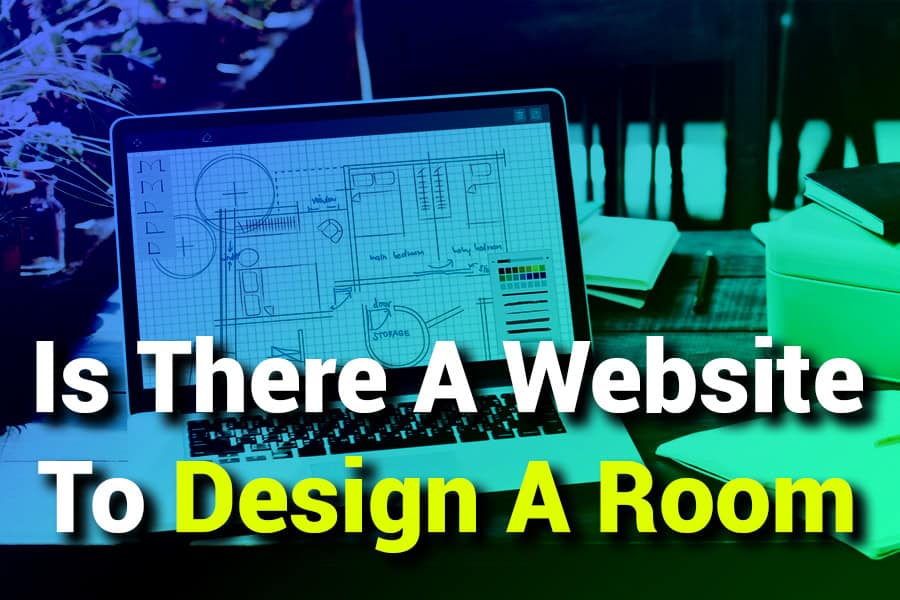Is There a Website to Design a Room? Find the Best Online Tools

When planning a room makeover, having a visual representation of your ideas can make all the difference. But is there a website to design a room? The good news is that multiple online platforms enable users to create digital room layouts, experiment with furniture placement, and explore design possibilities before making actual changes. Whether you are a homeowner, interior designer, or simply redecorating a space, these online tools provide an easy and efficient way to visualize your dream room.
This article will explore various room design websites, discussing their features, benefits, and limitations. We will also address how these platforms compare to traditional interior design methods and how they cater to both professionals and beginners.
Is There a Website to Design a Room?
Yes, several websites allow users to design a room virtually. Platforms like Planner 5D, Roomstyler, and Floorplanner provide intuitive drag-and-drop features to create layouts, add furniture, and experiment with color schemes. These tools help visualize room designs before making real-world changes.
What Are the Best Websites to Design a Room?
Online room design platforms have become increasingly popular due to their ease of use and accessibility. These websites provide an array of tools catering to different skill levels, from complete beginners to professional interior designers. Whether you need a simple layout for a home makeover or a detailed architectural blueprint, these platforms offer intuitive solutions to help visualize and plan interior spaces effectively. Experienced website designers blend creativity and technical expertise to build engaging, high-performance sites that captivate users and drive results.
- Planner 5D: A Versatile Room Design Tool
Planner 5D is a user-friendly platform that enables users to create both 2D and 3D room designs. It provides an extensive library of furniture, decor, and materials, making it easier to experiment with various design elements. One of its standout features is its ability to generate realistic renderings, allowing users to visualize their room with precise details. Additionally, it offers pre-designed templates, making customization effortless for beginners.
- Roomstyler: An Intuitive and Easy-to-Use Platform
Roomstyler is a great option for those looking for an easy-to-navigate platform. Its drag-and-drop interface makes experimenting with different layouts, furniture arrangements, and color schemes seamless. Users can access an extensive catalog of outdoor furniture and decor from well-known brands, helping them make more informed design decisions. Additionally, Roomstyler fosters a strong community of designers who share their projects, offering inspiration for those seeking fresh ideas.
- Floorplanner: Ideal for Space Planning
Floorplanner is widely used by real estate professionals, architects, and interior designers. This platform specializes in creating detailed and accurate floor plans, helping users plan out room layouts with precision. Its advanced measurement tools ensure that dimensions are correctly represented, making it a reliable choice for anyone looking to optimize their space effectively.
- IKEA Home Planner: Designed for Furniture Arrangement
IKEA Home Planner is specifically designed for users looking to furnish their space with IKEA products. It allows users to select and arrange furniture from the IKEA catalog, ensuring compatibility with their room dimensions before making a purchase. This platform is especially useful for those who prefer IKEA’s minimalist and functional furniture options.
- SketchUp: Professional-Grade 3D Modeling
SketchUp is a powerful tool tailored for advanced users, including architects and professional designers. Unlike other platforms, SketchUp provides in-depth 3D modeling capabilities, allowing for highly detailed room visualizations. While it has a steeper learning curve, its flexibility and professional-grade tools make it a top choice for those who require highly customized room designs.
How Do These Room Design Websites Work?
Each online room design platform operates with its unique features, but most follow a structured process to help users create their ideal space efficiently. These tools simplify the design process by offering user-friendly interfaces and customizable options. Below is a general workflow that most platforms follow:
- Selecting Room Shape and Dimensions: Users begin by choosing a basic room shape that closely resembles their space. They then input precise dimensions to ensure accuracy in the layout and final design. This step is crucial for maintaining scale and making informed design decisions.
- Adding Furniture and Decor: Most platforms offer a drag-and-drop interface that allows users to place furniture, appliances, and decorative elements effortlessly. This feature makes it simple to experiment with different arrangements and optimize space utilization.
- Customizing Colors, Textures, and Materials: Users can explore a wide range of customization options, including paint colors, flooring materials, wall textures, and fabric patterns. These features enable homeowners and designers to experiment with various styles before committing to a specific look.
- Generating 3D Renderings or Floor Plans: After finalizing furniture placement and design elements, the platform generates a realistic 3D rendering or an interactive floor plan. This allows users to visualize their space from multiple angles and make any necessary adjustments before implementation.
- Saving and Sharing Designs: Many platforms provide options for users to save their projects for future reference or share them with family members, interior designers, or contractors. This feature makes collaboration easier and ensures that all stakeholders are aligned on the design vision.
Benefits of Using an Online Room Design Website
Convenience and Accessibility
Online design tools provide an effortless way for users to experiment with different room layouts from the comfort of their homes. Without needing to visit a physical showroom or hire a professional designer, homeowners can explore a wide range of interior design possibilities. These platforms allow users to visualize their ideas instantly, making the process of designing a room both efficient and enjoyable.
Cost-Effective Solutions
Many online room design platforms offer free versions with essential features, making them an affordable alternative to hiring an interior designer. With minimal financial investment, users can access various tools to customize their space, saving money while still achieving professional-looking results. For those who need advanced features, premium versions are available at a fraction of the cost of professional design services.
Realistic Visualization
One of the most significant benefits of these tools is their ability to generate 3D models and lifelike renderings. These realistic representations help users see exactly how their room will look before making any permanent changes. Whether adjusting furniture placement or experimenting with different color schemes, this feature ensures that users can make informed decisions without second-guessing their choices.
Easy Customization
Customization is a key feature of online design tools, allowing users to quickly swap out furniture, adjust colors, and explore various styles with just a few clicks. This flexibility makes it simple to experiment with different design elements and refine a room’s aesthetic without the need for extensive redesigns. Users can continuously tweak their designs until they achieve their desired look.
Collaboration Options
Many platforms offer built-in sharing features, enabling users to collaborate with family members, interior designers, or contractors. Whether seeking feedback from others or working on a shared design project, this function makes it easier to align ideas and bring a cohesive vision to life. By facilitating communication and collaboration, these tools ensure that the design process is both interactive and productive.
Are Online Room Design Tools Better Than Hiring a Professional?
While online tools offer a quick and cost-effective way to design a room, they may not fully replace the expertise of a professional interior designer. These tools are excellent for users who want to experiment with different layouts, furniture arrangements, and color schemes without incurring significant expenses. However, their functionality is often limited to predefined templates and general design principles, lacking the personalized touch and expertise of a seasoned designer.
Online room design tools are particularly useful when designing small or simple spaces. They allow homeowners and renters to visualize potential changes, helping them determine whether a specific layout or style works before making any real commitments. Additionally, these tools are ideal for users working within a limited budget, as they eliminate the costs associated with hiring a professional designer. By providing a virtual platform for testing different design ideas, they help users make informed decisions without the need for costly trial and error.
On the other hand, professional interior designers bring an unmatched level of expertise and creativity to complex or large-scale projects. When dealing with expansive spaces, intricate layouts, or structural modifications, an experienced designer ensures that every element aligns with both aesthetic and functional requirements. Their ability to provide customized solutions, including bespoke furniture recommendations and tailored design strategies, enhances the overall quality of the space.
Moreover, professional designers play a crucial role when structural changes are involved. Whether it’s knocking down walls, optimizing natural lighting, or ensuring proper space utilization, their knowledge of architecture and spatial planning is invaluable. They can also coordinate with contractors, source unique materials, and oversee the implementation process to ensure a seamless execution of the design vision.
Ultimately, while online design tools are excellent for preliminary planning and visualization, they do not replace the expertise of a professional designer. For complex projects requiring customization, structural alterations, or a sophisticated aesthetic, hiring a professional remains the best choice. The decision between using an online tool or working with a designer depends on the scope of the project, budget considerations, and the level of personalization required.
In Closing
The answer depends on your needs. If you’re looking for a quick, cost-effective way to visualize your room design, online tools are an excellent choice. They provide flexibility, ease of use, and realistic renderings that help bring your ideas to life. However, for more complex projects, professional designers still offer valuable expertise that online platforms may lack.
FAQ’s
Q. Are room design websites free to use?
A. Many platforms offer free versions with basic features, while premium versions provide additional customization options.
Q. Can I use these tools without any design experience?
A. Yes, most online room design tools are user-friendly and require no prior experience.
Q. Can I save and modify my designs later?
A. Most platforms allow users to save projects and make adjustments as needed.
Q. Do these tools provide accurate room measurements?
A. Some tools offer precise measurement inputs, but it’s always best to verify dimensions manually.
Q. Are online room design tools compatible with real furniture stores?
A. Yes, some platforms, like IKEA Home Planner, integrate real furniture catalogs to help with accurate planning.
